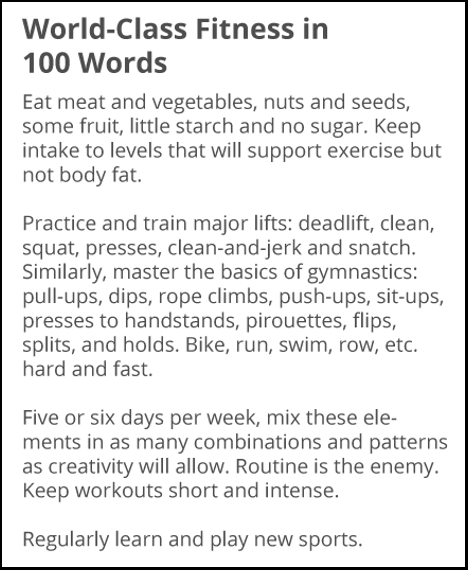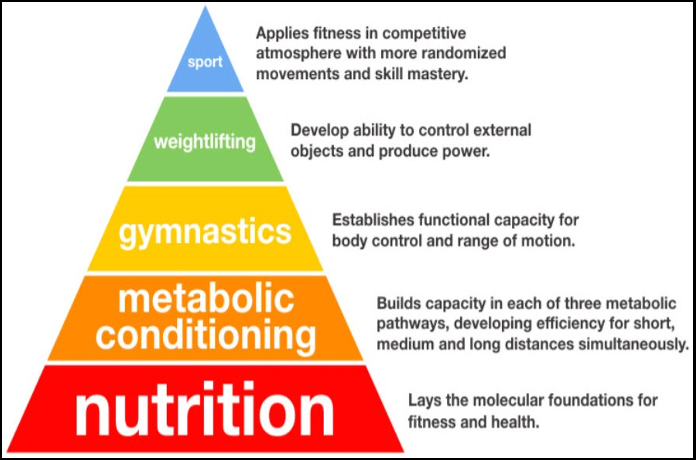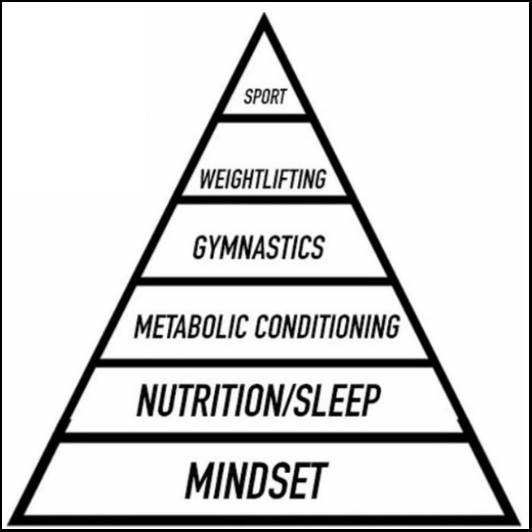I have now practiced CrossFit for roughly 4,5 years, of which almost 3,5 years competitively. During the time of competitive training I have tried different training programs, experimented with different diets, and experienced ups and downs during easier and tougher times. From all this, I have learned, usually through the hard way, what works for me and what doesn’t. One of my main goals has been to effectively combine my career with CrossFit as well as possible. Don’t however think that I am the guy that follows a training program or diet to the letter, because I don’t. I am just a normal guy who strives to become better, but still can enjoy a cheat meal or a beer whenever I feel like it, unless The CrossFit Open is just around the corner. 😉
I have never really come to study the benefits from incidental activity (hyötyliikunta), since I have assumed that simply working out 5 times a week is more than enough exercise for the human body. Apparently, I was wrong there. Especially during office hours or working from home, where it is easy to become physically inactive, I soon got to experience the harm that sedentary behavior, SB, (istuminen/fyysinen passiivisuus) does to you. I felt that there might be something I can really benefit from by analyzing the elements of personal well-being in context of CrossFit and everyday performance more closely.
While this subject is fundamental for well-being, it’s also quite interesting, and I think You could gain something by reading this. The essential findings are summarized into a 3-part article that will be posted here on the Basement Blog, where the content mainly focuses on how habitual activity can lead to improved performance of the general CrossFit athlete. Every article also has a challenge that the readers can implement into their daily routines. At this stage, I want to point out you don’t need to be a competitive CrossFit athlete in order to benefit from reading this. However, if you:
- by any means train ambitiously and strive to learn and become better,
- are struggling with stress and difficulties from combining work with CrossFit, or
- feel your development has stagnated, then this is for you!
If you already know this, you can always rehearse the fundamentals required to become better at CrossFit. This setup is intended to tackle the aspects of training modality and how your everyday routines either can profit, or harm, your performance in the gym. It is necessary to mention, that I am not an expert in this field, and the content is mainly based on personal experiences with support from relevant published texts as reference.
These articles focus each on separate aspects, which when put together, will create an entity that hopefully facilitates the understanding of the requirements for personal development in CrossFit.
1st article: Understanding CrossFit: The hierarchical pyramid of development
2nd article: Sedentary behavior and Physical inactivity
3rd article: Stagnated development and Sport-specific training
Understanding CrossFit: The hierarchical pyramid of development
I personally believe that, in order to become better, you need to really understand the fundamentals of the practiced activity, in this context, CrossFit. This article goes back to the roots about CrossFit by systematically breaking down and disclosing its definition and what exactly is required from the athlete into manageable pieces.
CrossFit the Sport of Fitness
CrossFit can be prescribed as constantly varied functional movements performed at high intensity, that is the quantifiable approach to a finally well-defined notion of what fitness is, according to Greg Glassman the founder and former CEO of CrossFit. The prescription itself is vague and if it confused you, a more comprehensive definition of Fitness “World-Class Fitness in 100 words” by Glassman reads as following:

But who is this Greg Glassman, and have you ever seen a picture of him? I can tell that he isn’t the fit ideal human that he encourages everyone to become. In my opinion, Greg Glassman has developed a tremendous fundamental and characteristic methodology that enables people to live a healthier and stronger life. I highly doubt that Glassman is living by his own methodology, but he has a point in what he is encouraging, even though he can be considered a douche.
While CrossFit’s definition of Fitness is informative and encompasses all the fundamentals that belongs in the “sport of fitness”, it only scratches the surface of what actually is required from an athlete in order to “get the whole package” so to say.
The CrossFit Pyramid
The CrossFit Pyramid, that presents the foundational areas of the CrossFit methodology in a theoretical hierarchy for an athlete’s development, is introduced to everyone who attends the first class of CrossFit Basement’s On-Ramp beginners’ course. By following the pyramid as suggested, the athlete builds preparedness for the functional tasks that the specific sports require.

Let me ask you a question, and let’s be honest with each other: How often do you have the pyramid in mind while training/thinking about CrossFit? I can personally say that I do not, but I will strive to get better at it.
The pyramid helps us understand the important areas, which systematically decrease in importance the higher up the pyramid we go. It begins with Nutrition as the most substantial component and ends with the Sport-category, in this case CrossFit. Imagine that the least important piece (CrossFit) is the thing we mainly focus on becoming better at. The scheme basically indicates that, whenever you feel yourself struggling with something, you should concentrate on components/areas located below. You can’t out-train a bad diet.
I managed to find a slightly extended version of the pyramid that I think got more comprehensive by adding Mindset: as the Pyramid’s mainstay and furthermore combining Nutrition/Sleep:. Here, the focus is not on the sport itself, but on the fundamentals in life.
Mindset:
I believe ‘mindset’ can be differently categorized depending on the context. For example, Performance-Mindset, would occur inside the gym involving positive self-talk, visualizations or your goal of completing a whole round of a WOD without breaks. Development-Mindset should, in my opinion, occur outside the gym and involve routines that help you towards your goals. A great mindset facilitates the creation of micro-targets/routines which allow for more optimal circumstances that primarily benefits your well-being but hopefully also your performance in CrossFit. Such routines might encompass pause exercises, daily walks, mobility sessions, nutrition schemes, and sleep schedules.

Nutrition/Sleep:
Simple and short, don’t overthink your nutrition too much. Not everyone counts their macros, not me and neither does Matt Fraser 😉. Just make sure you get enough food during the day, that’s already challenging. Did you also know that the number of people who can survive on 6 hours of sleep or less, without showing any signs of damage, rounded to a whole number and expressed as a percent of the population is zero (0)? If you get below 7 hours of sleep, please check out what Dr. Matthew Walker (Sleep Doctor) says about the importance of sleep. It’s totally mind-blowing! Link to –> Joe Rogan Experience – #1109 Matthew Walker (Youtube) <–.
The Challenge
As a finisher to this article, I want to give you a challenge. The Challenge for you is to study the CrossFit Pyramid and choose one (1) thing from the pyramid you think could benefit a) your performance as a CrossFit athlete or b) just the standards in your daily life. Your aim is to follow and improve that one thing for 3 weeks, as a gentle start. A suggestion is that you start low on the pyramid.
Challenge examples:
- Try to schedule/manage your daily tasks to help improve your preparedness for the WOD.
- Try to visualize the WOD – How to tackle it? What to focus on (technique / pacing etc.)?
- Try to get at least 7 hours of sleep every night between Sunday-Thursday.
- Try to cut junk food/sugar/alcohol-consumption to weekends only (improves sleep quality).
Sources:
CrossFit – Theoretical Hierarchy Of Development.
CrossFit – What is Fitness?.
CrossFit Committed – How to be better at CrossFit – Right mindset and mental toughness.
CrossFit Journal – Understanding CrossFit.
CrossFit Journal – Defining CrossFit.
Joe Rogan Experience – #1109 Matthew Walker (Youtube)
#1109 Matthew Walker (Spotify)
#1109 Matthew Walker, summary with Finnish subtitles (Facebook)
Thank you for reading, and feel free to reach out to me at the gym or through social media.